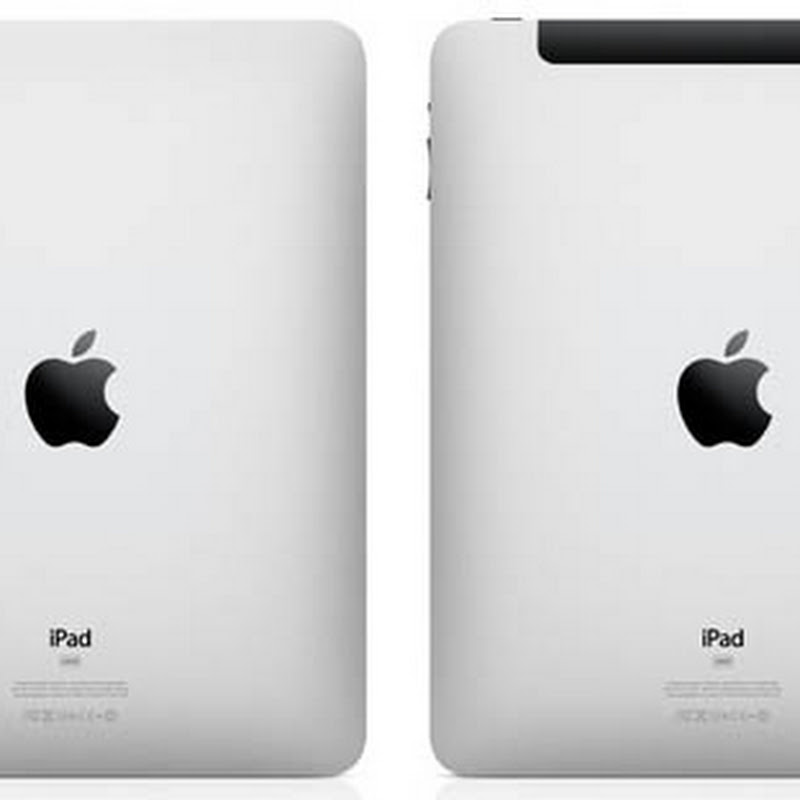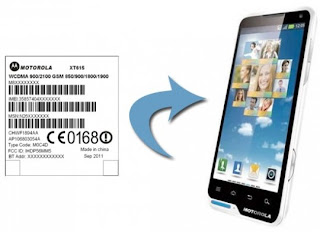We compare Motorola's brand new Razr smartphone with Samsung's sizable Galaxy Note handsetMotorola has just launched its latest Razr smartphone while Samsung just brought its larger Galaxy Note device to market. We pitch them against each other to see which is best.
FormMotorola’s brand new Razr represents the company’s move to a cohesive yet bold new visual style, featuring tapered edges together with a sharply angled aesthetic, which combine to make something very refreshing and distinctive.
It’s instantly recognisable and sits firmly alongside the new Motorola Xoom 2 tablets in terms of design.
It may be a grimly predictable observation but Razr really is an appropriate name here as it easily takes the title of ‘thinnest smartphone’ at 7.1mm. Other standout features include the textured Kevlar back panel, which looks rather snazzy as well as making the phone very durable, though, we perhaps wouldn't rely on it to stop bullets.
Compared with the Razr, Samsung’s Galaxy Note is an absolute beast of a handset, resembling a small tablet with its 5.3-inch screen.
Its size is sure to not meet everyone’s tastes, but despite being what some may consider a cumbersomely scaled device it still has a stylish element to its construction.
It may not be as thin as the Razr but it’s still pretty slim at 9.7mm and features a nicely textured and slightly curved back panel. Being fairly light helps a lot, too.
The front carries Samsung’s characteristic minimalist aesthetic and the screen extends close to the edges of the device, giving a thin bezel which lends a sharp, neat appearance.
As much as we like the styling of the Samsung Galaxy Note, Motorola’s Razr is a much more attention-grabbing handset visually, a factor which wins it this round.
Winner -
Motorola Razr DisplayIt is, frankly, quite difficult for most phones to beat the Samsung Galaxy Note’s vast 5.3-inch expanse of high resolution and high pixel density
Gorilla Glass.
The Galaxy Note uses Samsung’s
Super AMOLED technology for enhanced brightness and colours, along with better power efficiency than standard LCD.
The Gorilla Glass means the capacitive, multi-touch capable touchscreen won’t smash easily and at 800x1280 pixels, with a pixel density of 285
pixels-per-inch (ppi), you can be sure it will push out very clear and clean visuals on a grand scale.
Apart from this, the phone is loaded with a tailored build of Samsung’s
TouchWiz 4.0 user interface (
UI), along with gyro and accelerometer sensors that allow for screen rotation.
The customised UI enhances menus and native apps for the Galaxy Note’s extra-large screen space. This includes the addition of split screen interface boxes and allows for full screen web page and video viewing.
The other way in which the Galaxy Note has been customised is the S Pen stylus compatibility. The S Pen is a pressure sensitive stylus, lightly brushing the screen in a painting app, for example, will create a thin line while pressing harder will create a thicker stroke.
It also has some nifty in-built support such as a hold press for screenshot capture and a double tap for bringing up a Memo note over any app or screen.
A hold press outside of the Memo will take you back to the screen for as long as it’s held, allowing you to quickly switch for note taking between your note and a wep-page, for example.
The Motorola, then, is comparatively diminutive when it comes to the display.
Except that it’s not, really (still with us?). It's a good sized screen at 4.3-inches and what’s more the resolution and pixel density are pretty damn good too at 540x960 pixels and 256ppi.
Like the Galaxy Note, the Razr also uses a Super AMOLED
capacitive touchscreen with multi-touch, Gorilla Glass and an accelerometer.
Make no mistake, these are both excellent displays which most users would be more than happy with.
Technically, the Galaxy Note comes out as superior thanks to its higher resolution and pixel density. We also prefer larger touchscreens so we do see that as a plus.
However, for everyone there is sure to be a cut-off point where a large screen does become impractical, regardless of its impressive stats.
For us, this isn’t the case with the Galaxy Note, but if you think a 5.3-inch device would be too unwieldy you’re going to be far better off with the Motorola Razr. Either way, you won't be disappointed.
Winner - Draw
StorageThe Razr comes with 16GB of onboard storage space and 1GB of RAM. Also, unlike its larger tablet counterparts, it has additional
microSD card storage up to a further 32GB.
Samsung’s Galaxy Note has the same 1GB of RAM and 16GB of storage with the lower-end option, however, you can choose the 32GB model for some ramped-up capacity. This can be extended even further thanks to 32GB microSD capability.
We’re siding with the Galaxy Note here. The Razr is no miser when it comes to storage space but Samsung’s offering is much more generous.
Winner - Samsung Galaxy Note
Processor
Both phones are powered by an ARM Cortex-A9 dual core processor but both have been setup and tweaked in slightly different ways.
Samsung’s oversized phone uses the company’s own Exynos processor that was also used to excellent effect inside the Galaxy S2 smartphone. Alongside this it boasts a Mali-400MP graphics processing unit (GPU), which is one of the best out there.
The whole thing is clocked at a hefty 1.4GHz, which is faster than the Galaxy Nexus and Galaxy S2.
Motorola’s Razr isn’t quite as bang up-to-date as the Galaxy Note. It’s clocked at 1.2GHz, the same as the Galaxy Nexus and Galaxy S2, but it runs a Texas Instruments OMAP 4430 processor and a PowerVR SGX540 GPU.
It’s certainly no slouch and isn’t going to break a sweat running virtually any current game or app you care to chuck at it, but it doesn’t quite have the same brute force and ‘future-proof’ quality that the Galaxy Note provides.
Winner – Samsung Galaxy Note
Operating System
These are both Android phones running on version 2.3 Gingerbread, though, Motorola has confirmed the Razr will get the new 4.0 Ice Cream Sandwich build in the new year.
Being a new model, it seems likely the same will happen to the Galaxy Note, though, perhaps at a slightly slower pace due to its custom S Pen and display requirements.
Gingerbread is relatively stable as Android builds go. It’s also got that signature effortless multi-tasking capability and a useful set of app management controls to keep track of system resources. On these powerful handsets it runs without breaking a sweat.
One thing it really has going for it is the abundance of apps on the Android Market, something we tend to miss on other systems other than iOS.
Apart from this, however, it’s not quite as feature-rich as more recent systems from Microsoft and Apple and we’re eagerly anticipating Ice Cream Sandwich to bump things up a notch.
There’s nothing to compare the two here as they’re both on an equal footing.
Winner - Draw
Camera
Each handset is equipped with an 8-megapixel primary camera at a 3264x2448 pixel resolution and capable of 1080p video capture.
The Motorola has a 1.2-megapixel secondary on the front, while the Samsung Galaxy Note’s secondary is rated at 2-megapixels and both allow for video calls.
Both phones have a similar line-up of camera features with LED flash, autofocus, touch focus, geo-tagging, image stabilisation and face detection. The Samsung Galaxy Note has the addition of smile detection so you don't need to press the shutter. Well, unless you don't smile, that is.
These devices are pretty evenly matched when it comes to in-built cameras and both are sure to offer a satisfactory experience. This one’s a draw.
Winner - Draw
Final ThoughtsThese are two excellent smartphones, in terms of performance, storage, display quality and camera they’ve got a lot to offer even the most demanding user.
Generally speaking, the Motorola comes out slightly behind the Galaxy Note in a few areas.
Although the processor is brilliant, it’s not quite as forward-looking as the Galaxy Note’s and the Razr also has less storage space, though, still more than enough for most people. Plus Google Music will present increased space for both in the cloud, if the service is ever launched in the UK.
We think the Razr is actually the better choice in terms of getting the most out of the conventional smartphone platform - it’s much more usable as a phone.
The Galaxy Note, much as we love it, is a very purpose-built creature and you’re probably only going to be able to overlook its inconvenient size if its quirky features are of huge benefit to your work, hobbies or lifestyle.
If so, you’re dealing with a highly rewarding and powerful smartphone, but we’d still suggest trying one out in a phone shop if possible before sealing the deal.
The bottom line is, either way, these are about as good as you can get when it comes to Android.







 11:54 AM
11:54 AM
 Simranpal SIngh
Simranpal SIngh

































 )
)










 [
[



